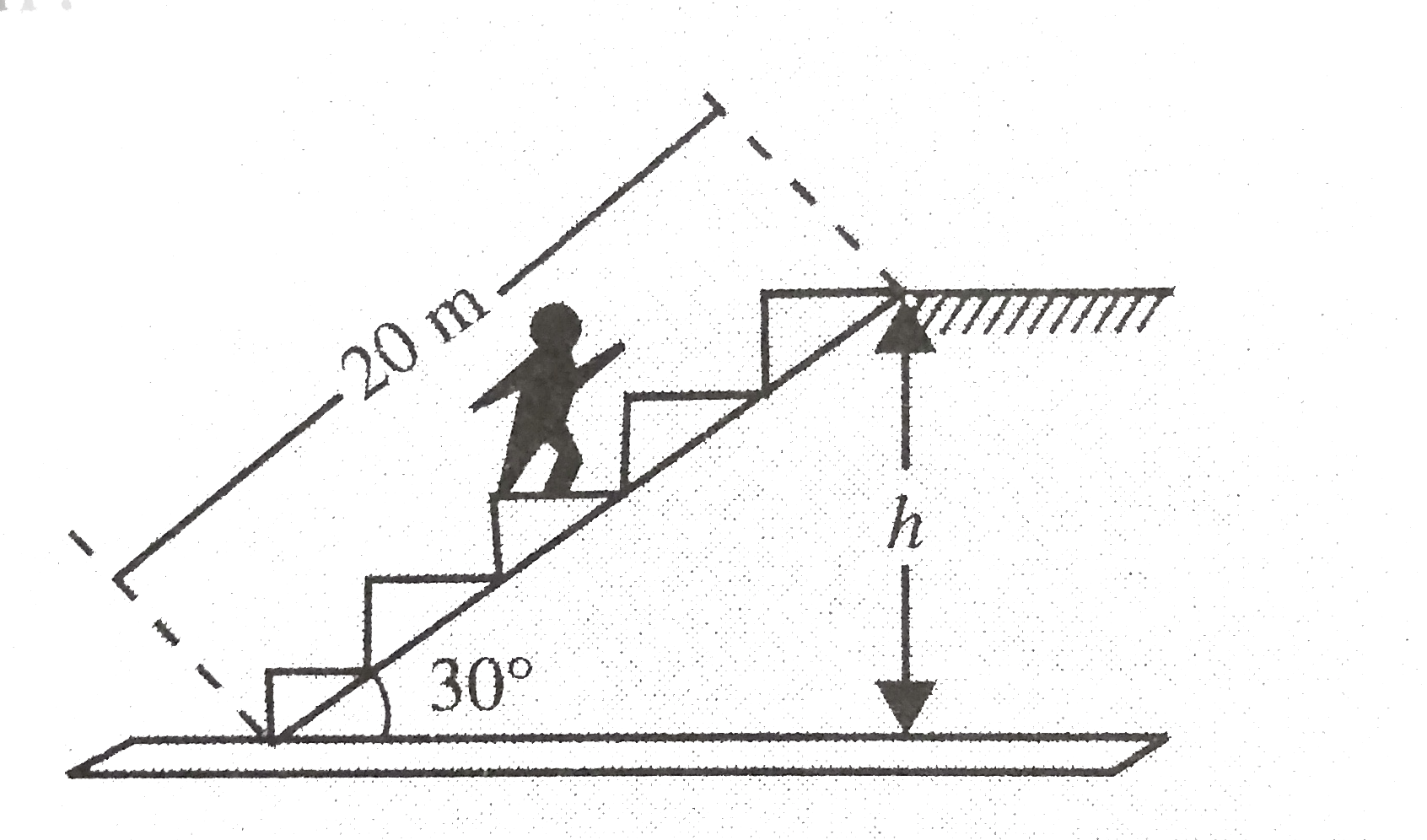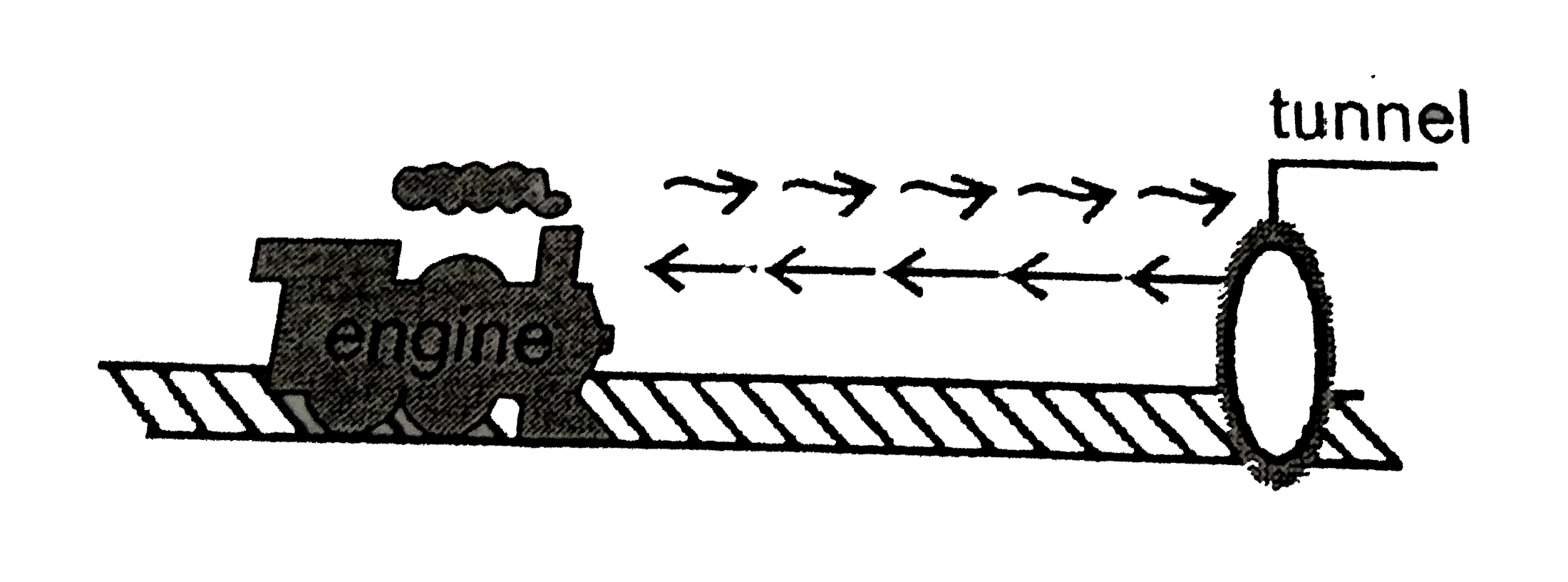A person decided to walk on an escalator which is moving at constant rate (speed). When he moves at the rate 1 step/sec. then he reaches top in 20 steps. Next day he goes 2 steps/sec. and reaches top in 32 steps. If speed of escalator is n steps/sec. Find the value of n
The correct Answer is:3
To solve the problem, we need to find the speed of the escalator (n) based on the information given about the person's walking speed and the number of steps taken on two different days.
1. Determine the time taken on Day 1:
- The person walks at a speed of 1 step/sec and takes 20 steps.
- Time taken (t1) on Day 1 = Number of steps / Walking speed = 20 steps / 1 step/sec = 20 seconds.
2. Determine the time taken on Day 2:
- The person walks at a speed of 2 steps/sec and takes 32 steps.
- Time taken (t2) on Day 2 = Number of steps / Walking speed = 32 steps / 2 steps/sec = 16 seconds.
3. Calculate the effective speed of the person on both days:
- On Day 1, the effective speed with respect to the escalator is (n + 1) steps/sec (where n is the speed of the escalator).
- On Day 2, the effective speed with respect to the escalator is (n + 2) steps/sec.
4. Calculate the total distance covered (length of the escalator):
- The distance covered on Day 1 = Effective speed × Time = (n + 1) × 20.
- The distance covered on Day 2 = Effective speed × Time = (n + 2) × 16.
5. Set the distances equal to each other:
- Since the length of the escalator is the same on both days, we can set up the equation:
(n+1)×20=(n+2)×16
6. Expand and simplify the equation:
- Expanding both sides gives:
20n+20=16n+32
- Rearranging the equation:
20n−16n=32−20
4n=12
7. Solve for n:
- Dividing both sides by 4:
n=3 steps/sec
Final Answer:
The speed of the escalator (n) is 3 steps/sec.
- The person walks at a speed of 1 step/sec and takes 20 steps.
- Time taken (t1) on Day 1 = Number of steps / Walking speed = 20 steps / 1 step/sec = 20 seconds.
- The person walks at a speed of 2 steps/sec and takes 32 steps.
- Time taken (t2) on Day 2 = Number of steps / Walking speed = 32 steps / 2 steps/sec = 16 seconds.
- On Day 1, the effective speed with respect to the escalator is (n + 1) steps/sec (where n is the speed of the escalator).
- On Day 2, the effective speed with respect to the escalator is (n + 2) steps/sec.
- The distance covered on Day 1 = Effective speed × Time = (n + 1) × 20.
- The distance covered on Day 2 = Effective speed × Time = (n + 2) × 16.
- Since the length of the escalator is the same on both days, we can set up the equation:
(n+1)×20=(n+2)×16
- Expanding both sides gives:
20n+20=16n+32
- Rearranging the equation:
20n−16n=32−20
4n=12
- Dividing both sides by 4:
n=3 steps/sec
The speed of the escalator (n) is 3 steps/sec.
Topper's Solved these Questions
- KINEMATICS-2DBook:ALLENChapter:KINEMATICS-2DExercise:Exercise (S-2)
Explore 15 Videos
- KINEMATICS-2DBook:ALLENChapter:KINEMATICS-2DExercise:Exercise (O-1)
Explore 40 Videos
- KINEMATICS-2DBook:ALLENChapter:KINEMATICS-2DExercise:Exercise (O-2)
Explore 46 Videos
- GRAVITATIONBook:ALLENChapter:GRAVITATIONExercise:EXERCISE 4
Explore 9 Videos
- MOTION IN A PALNEBook:ALLENChapter:MOTION IN A PALNEExercise:SOLVED EXAMPLE
Explore 28 Videos
Similar Questions
A 90−kg man runs up an escalator while it is not in operation in 10s. What is the average power developed by the man. Suppose the escalator is running so that the escalator steps move at a speed of 0.5m−1. What is then the power developed by the man as seen by the ground reference if he moves at the same speed relative to the escalator steps as he did when the escalator is not in operation?

View SolutionTwo persons A and B are standing at the origin and 210 meter away from the origin along the y-axis, respectively. A starts to move along x axis with acceleration 3.2m/s2 and thereafter with the same retardation and comes to rest after moving 320 m B moves with a constant velocity and catches A in 15 s. The speed of B is 10n3m/s. Find the value of n.
View Solution
Knowledge Check
A police party is chasing a dacoit in a jeep which is moving at a constant speed v. The dacoit is on a motor cycle. When he is at a distance x from the jeep, he accelerates from rest at a constant rate α. Which of the following relations is true, if the police is able to catch the dacoit ?
Av2<axBv2<2axCv2≥2axDv2=ax
An engine is moving towards a tunnel with a constant speed.

To check its own velocity, the driver sends whistles twice at an interval of 2 minutes. The sound moves forward, gets reflected from the tunnel and again reaches to the driver. He listens two echoes of the sound, at an interval of 1 minute, if speed of sound is 300m/sec, speed of the engine should be :
View SolutionWhen a man stands on a moving escalator he goes up in 50 sec. and when he walks up the moving escalator he goes up in 30 sec. Then the man walks up the stationary escalator in a time of ........ sec
View SolutionA soldier walks towards a high wall taking 120 steps per minute. When he is at a distance of 90 m from the wall he observes that echo of step coincides with the next step. The speed of sound must be
View SolutionA man is at the origin on the x-axis and takes a unit step either to the left or the right. He stops after 5 steps or if he reaches 3 or -2. Number of ways in which he
View SolutionA person walks up a stationary escalator in t1 second. If he remains stationary on the escalator. Then it can take him up in t2 swcond. If the length of the escalator is L, then
a. Determine the speed of man with with respect to the escalator. b. Derermine the speed of the escalator.
How much time would take him to walk up the moving escaltor?.
View SolutionThe rate law expresison is given for a typical reaction, n1A+n2B→P as r=k[A]n[B]n2. The reaction completes only in one step and A and B are present in the solution. If the reaction occurs in more than one step, then the rate law is expressed by consdering the slowest step, i.e., for SNl reaction r=k[RX]. If the eraction occurs in more than one step and the rates of the steps involved are comparable, then steady state approximation is conisdered, i.e., the rate of formation of intermediate is always equal to the rate of decompoistion of the intermediate. Conisder the reaction:
⎡⎢ ⎢⎣I2k2⇐⇒k12I(rapid equilibrium)H2+2Ik3−−→2HI(slow)⎤⎥ ⎥⎦
Which of the following expresison is correct?
View SolutionAn inquistive student, determined to test the law of gravity for himself, walks to the top of a building og 145 floors, with every floor of height 4 m, having a stopwatch in his hand (the first floor is at a height of 4 m from the ground level). From there he jumps off with negligible speed and hence starts rolling freely. A rocketeer arrives at the scene 5 s later and dives off from the top of the building to save the student. The rocketeer leaves the roof with an initial downward speed v0. In order to catch the student at a sufficiently great height above ground so that the rocketeer and the student slow down and arrive at the ground with zero velocity. The upward acceleration that accomplishes this is provided by rocketeer's jet pack, which he turns on just as he catches the student, before the rocketeer is in free fall. To prevent any discomfort to the student, the magnitude of the acceleration of the rocketeer and the student as they move downward together should not exceed 5 g.
Just as the student starts his free fall, he presses the button of the stopwatch. When he reaches at the top of 100th floor, he has observed the reading of stopwatch as 00:00:06:00 (hh:mm:ss:100 th part of the second). Find the value of g. (correct upt ot two decimal places).
View Solution